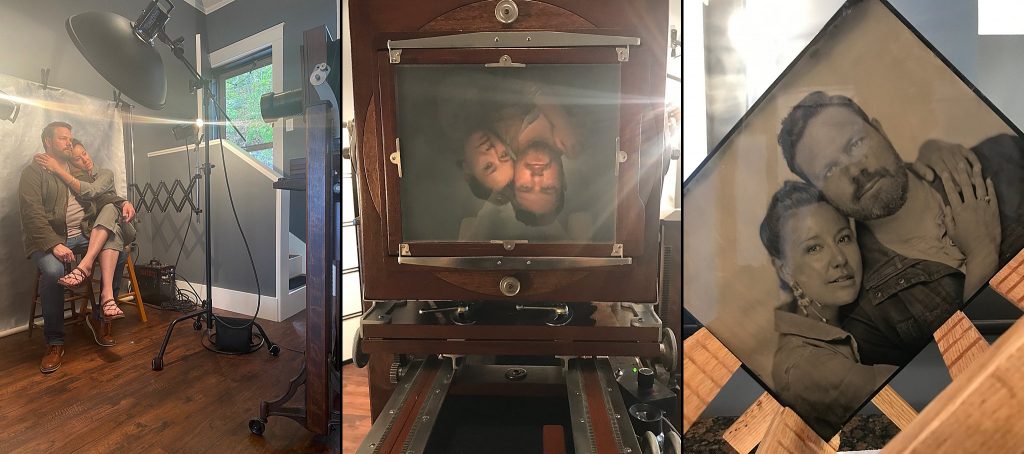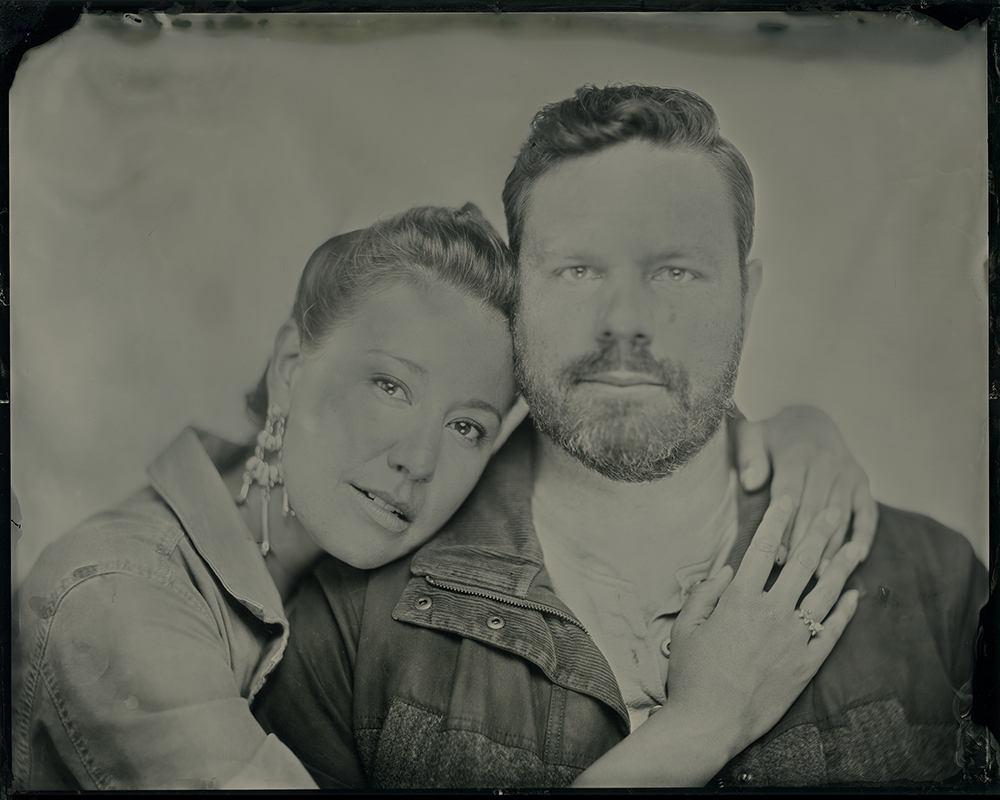Kieran and Neal had been looking forward to their couple’s tintype portrait experience since they booked their session last winter. Kieran took an interest in tintypes when she studied vintage photographic arts in college. She was intrigued by the unique, almost ghostly, nature of the images.
A tintype (also known as a ferrotype) is a handmade portrait on a metal plate using the wet-plate collodion method. This method was invented in the 1850s. Aside from the studio lights and darkroom safety measures, these portraits are still created the same way.
Tintypes pre-date film photography. They became popular with soldiers during the Civil War because of their durability. They could be carried around and mailed to families. Once varnished, these images are truly archival.

Unlike digital photography, tintypes require chemicals, a darkroom, and certain physical conditions. They also require a special large-format camera with a plate holder, lens, and camera stand or tripod. The camera I use was made in the early 1920s. The lens, a huge, brass, soft-focus portrait lens, was made in 1867.
There are about 30 steps to creating one plate. Each image will have unique qualities. Soft focus, blemishes, and swirls are part of the charm.

“Thank you for sharing your afternoon, lively spirit, and wonderful talent to capture a moment in our lives. It was truly a pleasure!” – Kieran
You can find out more and book your portrait session HERE.
